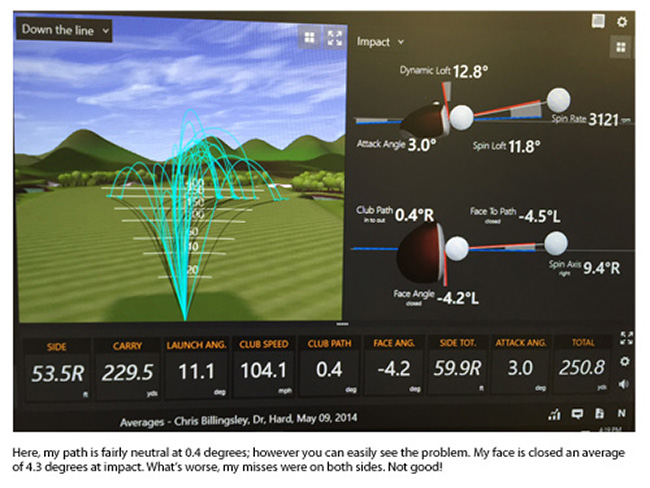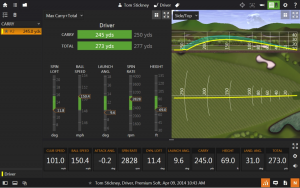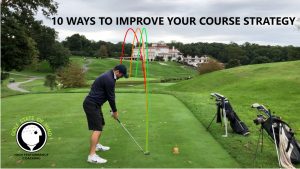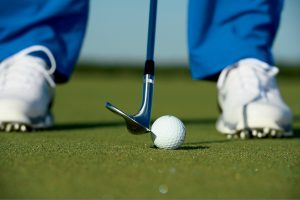Though the age old adage “drive for show, putt for dough” may be true on some level, we golfers know better. There may be no greater fear in golf than standing on the tee with the wind in your face and knowing you have to hit a fairway with out of bounds on one or… (gulp!) both sides. So while our skill with the flat-stick is certainly one of the key determiners of our success, scoring always starts with a well placed tee-ball. And when we struggle with the driver, golf becomes much more difficult.
Thankfully, help is around the corner. New technology is now making it possible to understand exactly what you do in your swing that makes the ball behave in certain ways. Armed with this knowledge, you can then learn how to feel a swing that gets the ball to travel on the lines you intend.
Enter Trackman
Trackman is a doppler-based radar that can measure, among other things, your swing path in relation to your target and the angle of your club face in relation to your swing path. Arguably, it is these two factors that have the greatest impact on the starting direction of your golf ball, and where it ultimately ends up.
What can Trackman do, and what do the numbers mean?
TrackMan provides accurate, real-time data and graphics on your ball’s launch conditions, flight, and landing. It can measure (among a whole host of other things) swing speed, club path, face angle, launch angle, spin and distance. For the purposes of this article, I am going to focus mainly on club path and face angle.

Club path refers to the direction the club head is moving at impact. Face angle refers to the direction your club face is pointing at impact. Ideally, we want the ratio of club path to face angle to be 2:1 for a driver. So in the example above, we have a club path of 6 (meaning 6 degrees to the right), and face angle of 3.5 degrees open (right). This shot started 3.5 degrees right of the target and drew back toward the center, stopping 4.6 feet right of the target line.
This is good news for you and me. It means that we don’t have to be perfect. We just need to use our own unique swing and work to get the ratios in line.
How Trackman saved my driver
Though I’m a decent player, I struggled with my driver for a long time. I could hit a hit snap hook way to the left as easily as I could hit a big push or slice way to the right, so it was difficult to be confident in choosing the right target. In fact, I was so unpredictable, that during last year’s club championships I benched my driver in favor of a 3-wood for two of the three rounds. As you can imagine, I gave up yards to the top players, and didn’t fare as well as I had hoped.
The call for help
This past winter, I sought out Mark Elliott, the Track-Man of my club, and together we set out to save my driver (and my sanity!).
The Starting Point, May 2014

The Treatment Plan
Over our first few sessions, we determined that I had a fairly consistent inside path, but it was a lack of control with the club face that was causing my troubles off the tee.
Progress, November 2015
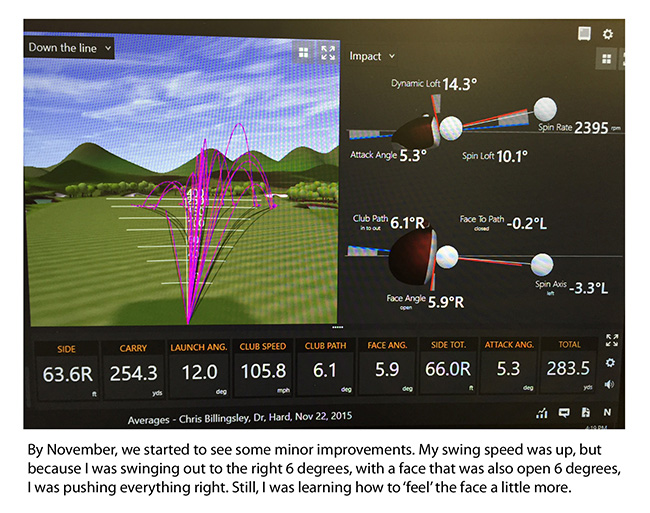
How I used the data to think less and feel more
What I needed to do was to not think in terms of numbers, but instead learn the different feels. After I’d hit a shot, Mark would get me to predict the result and ask me how I made this conclusion. What we were doing was making cognitive connections. By predicting the face angle and/or path, I had to connect the feel of the swing to the result. I would then confirm what I felt with the data from Trackman.
The premise was that if I could learn to associate a certain feel to each result, I would be well on my way to making authentic improvement. Each session, we would work off the results. If the data showed my face was closed to the path, Mark might ask me to open the face a little. Of course, opening the face a little has no numerical value. It’s a feel and I would simply have to figure out how I could accomplish this request. It’s amazing how your mind uses logic to problem solve. Simple manipulations in ball position and stance can also make a big difference in path and face angles, and as you start to understand what happens when you change a variable (because Trackman gives you the freedom to experiment) you become very powerful. You learn how to manipulate path and face, and yet still make a similar swing.
When Mark asked me to open the face a little, I turned the grip to the right a tiny bit at address and then moved the ball back slightly in my stance. Then I made the exact same swing… and voila. The face to path ratio was 2:1 and the ball started just right of the target and drew back to center.
Progress, January 2015
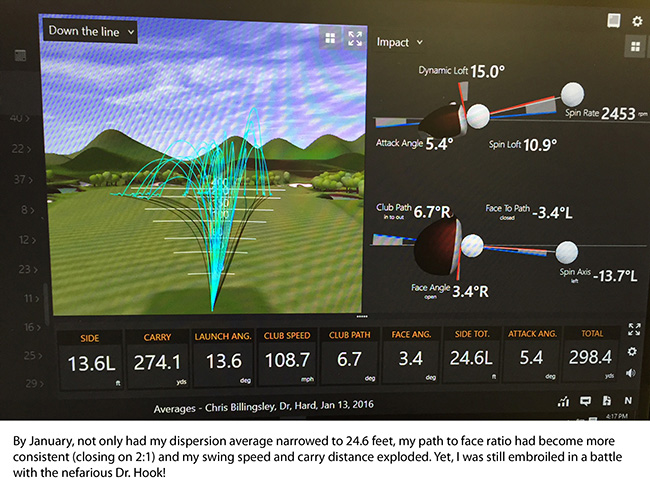
Progress, February 2015
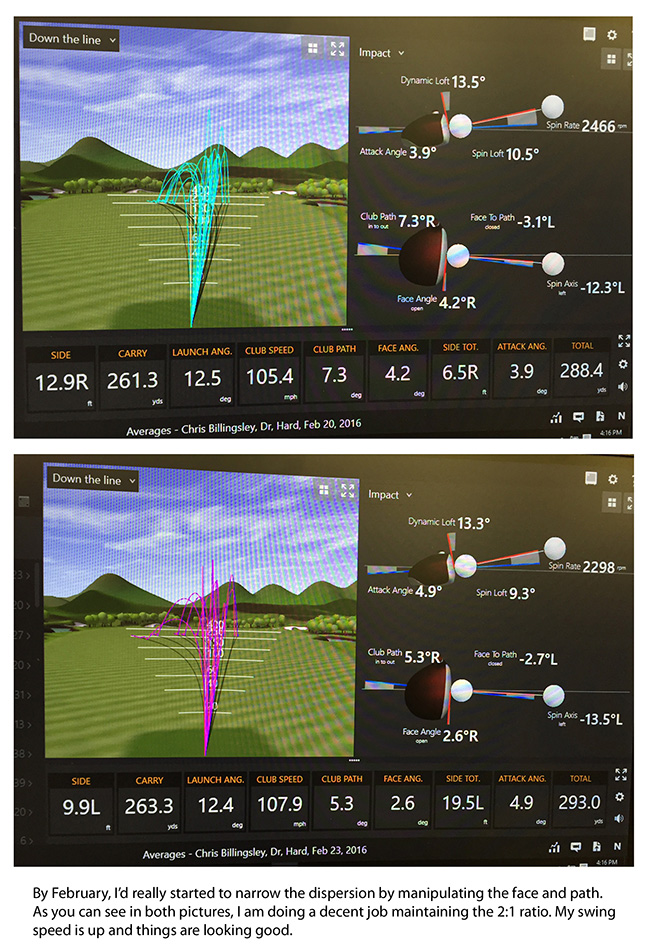
Progress, March 2015

There is no doubt in my mind that Trackman can help average golfers, as well as low-handicap golfers. Most people think that by using data like this, they are complicating the game, but I would disagree. For me, Trackman actually made improving simpler, because I no longer had to stand on the range and make assumptions about why my shots went where they did. I knew. By training with Trackman, you will learn how an open face or an inside path feels, for example, and you’ll know what you need to work on.
It’s almost like having your own superhero, rocketing in from the future to save you from the evil “Dr. Hook.” Never fear, Trackman is here!
